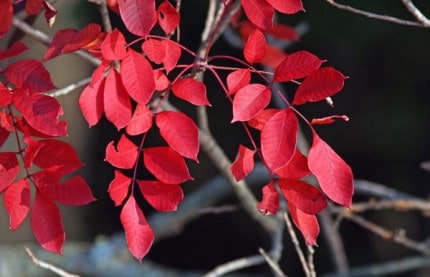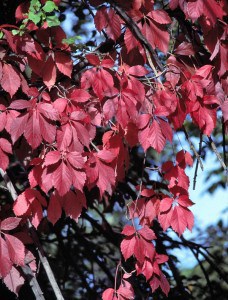
(Chelsea Update would like to thank Tom Hodgson and the Waterloo Natural History Association for the information and photos in this story.)
Change in the length of day is the switch that turns on the fall colors every year, but other factors determine whether the colors will be fantastic or just so, so.

Chlorophyll is the green pigment that produces the dominant color in leaves during the growing season. It is also the pigment that utilizes sunlight to produce the sugars that provide energy for growth.
Chlorophyll’s very existence also depends on that same sunlight and it deteriorates in the dark. That portion that is lost overnight must be replaced each day. This is not a problem when the days are long and the nights or short.
The autumnal equinox, which usually falls somewhere between Sept. 20 and Sept. 22, signals the beginning of the fall season and also marks the time when the nights are now longer than the days. This means that all the chlorophyll lost during the long night is not replaced during the short day that follows. Cooler night time temperatures also slow the leaf metabolism further inhibiting the growth of chlorophyll.
Gradually, the green color fades away and the leaves are said to “turn color.” Actually, the yellow and orange pigments have been present in the leaves all summer, but have been masked by the intense green of the chlorophyll. Now they can shine through in all their glory.
The red pigments are actually produced in the fall from leftover sugar in the leaves, but are most intense when early fall days are bright and sunny. A cloudy and rainy fall season makes for very little red color. The intensity of the fall colors is also influenced by the growing season. Hot, dry summers leave the trees stressed and in poor condition, and leads to a less spectacular and shorter color season.
Cool summers with plenty of moisture on the other hand result in healthier trees and brighter colors. Hard frosts early in the fall can shorten the season as well.

This year’s cool wet summer combined with the beautiful sunny fall days we’ve been experiencing should result in a spectacular color show. The early reds of Virginia creeper and sumac are already quite impressive, as is the deep maroon of gray dogwood. The color usually peaks in our area between Oct.20 and Oct. 23, but with weekly drives through the area one can experience the color season from start to finish.
The Waterloo Recreation Area with its tremendous diversity of habitats and plant species produces a riot of fall color equal to any one might find in Northern Michigan or anywhere else in the Midwest.
Beginning today, a “Crane and Color” map is available at the Discovery Center, which includes a suggested back roads color tour route through the park and identifies places where sandhill cranes can be seen feeding in area fields. The crane information on the map is updated every week.
For those who would rather walk, the Discovery Center’s 4 miles of nature trails provide another way to enjoy the fall season.













